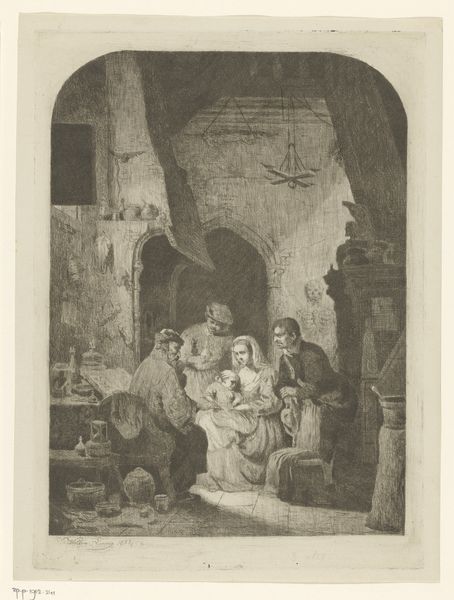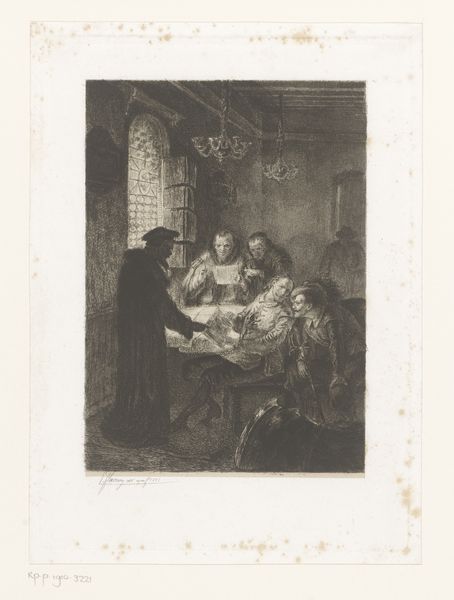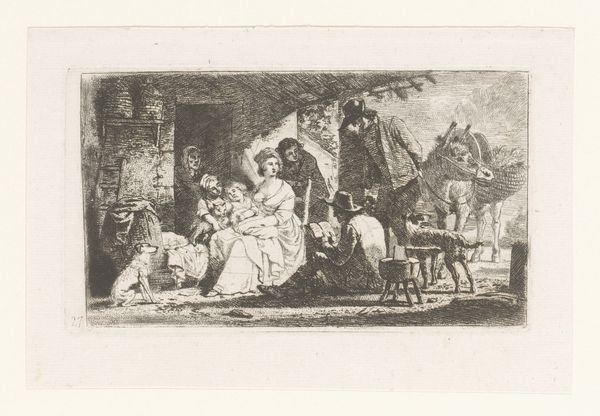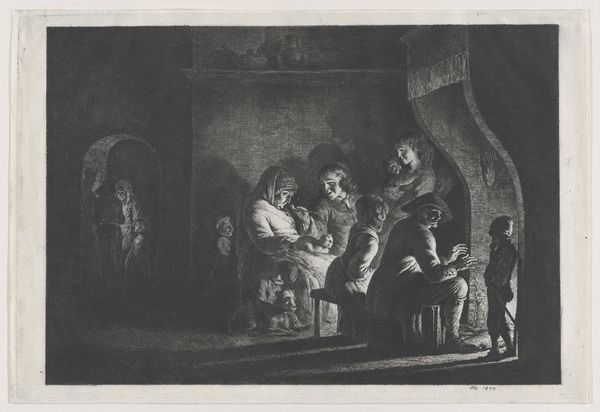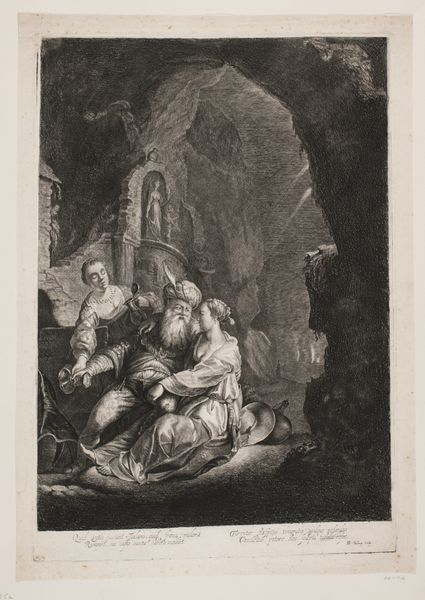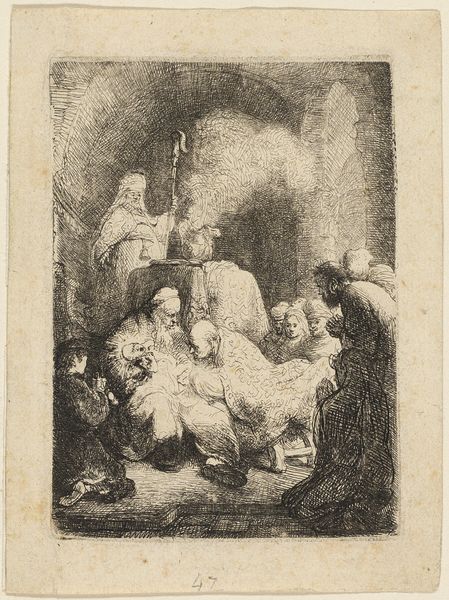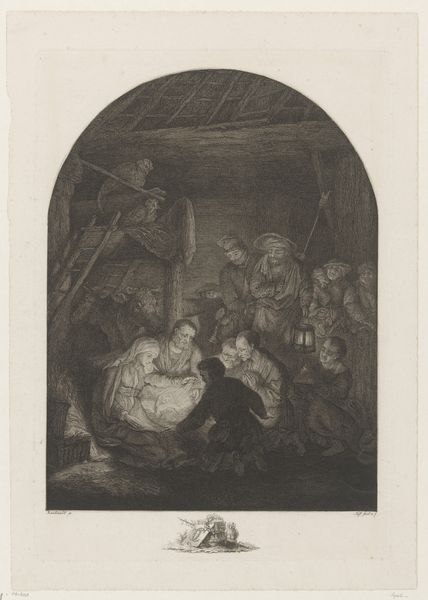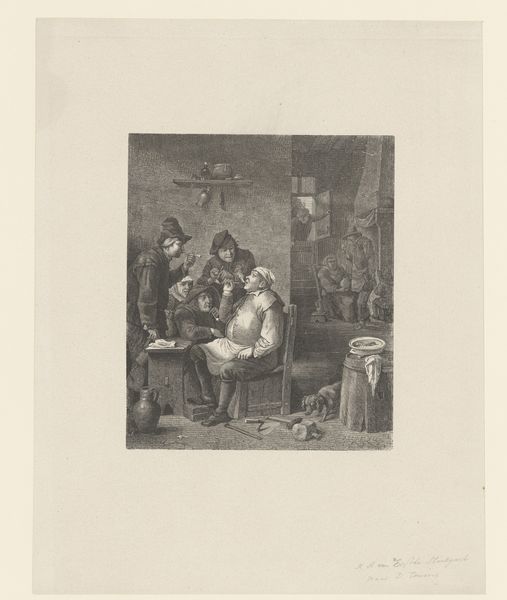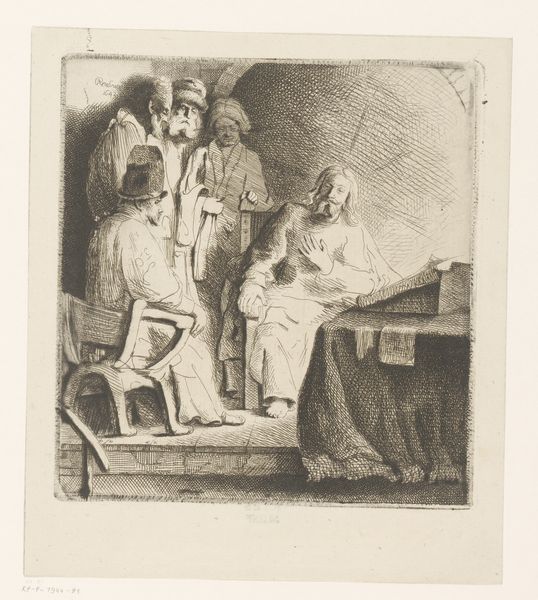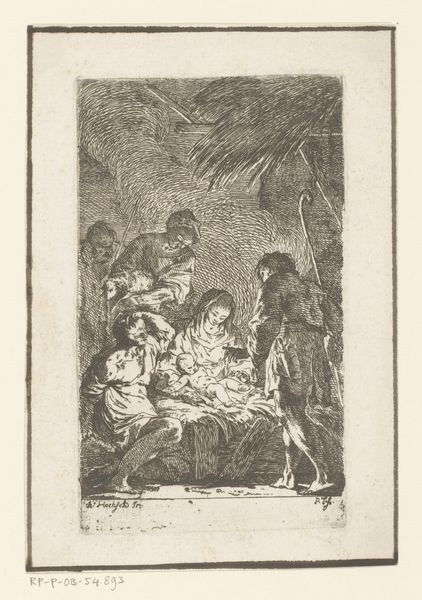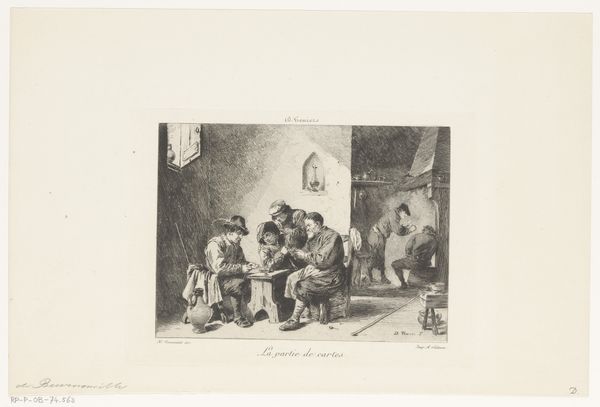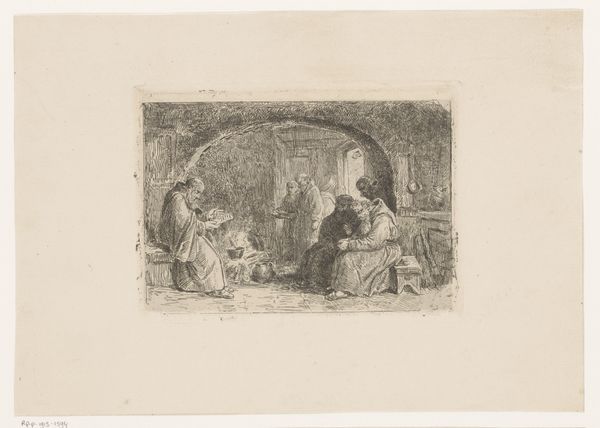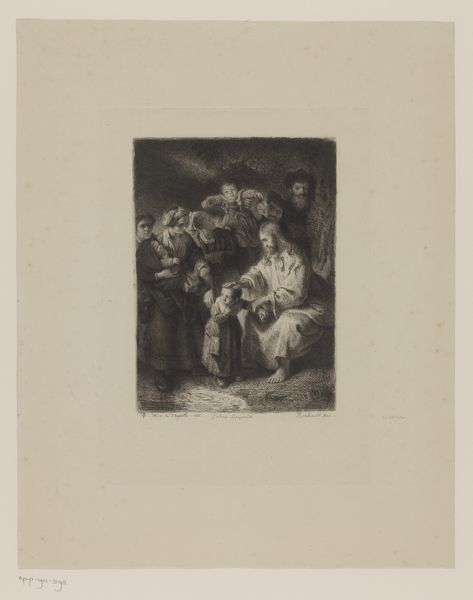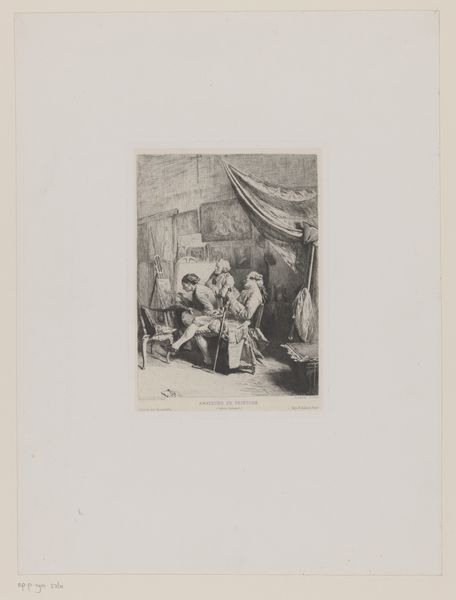
print, etching, engraving
#
narrative-art
# print
#
etching
#
old engraving style
#
19th century
#
genre-painting
#
engraving
#
realism
Dimensions: height 282 mm, width 203 mm
Copyright: Rijks Museum: Open Domain
Editor: Here we have "Family with a Sick Child Visiting the Doctor," an etching made by Willem Linnig around 1853. It’s…quite dark. I’m struck by the cramped space and how many people are gathered around this child. What story do you think Linnig is trying to tell here? Curator: Well, let's consider this print's place within the context of 19th-century genre painting. Images like this often served as visual documents of societal concerns. Illness, particularly child mortality, was a very real and present fear. To me, Linnig isn't just depicting a scene, but also speaking to anxieties surrounding public health and the limited access to reliable medical care for many. Notice how the family, likely working-class given the details of dress, has sought help within a home rather than a sterile hospital environment. What does that suggest about the perception of medical institutions at the time? Editor: It implies a sense of distrust, maybe? Or that hospitals were a last resort. So, this image isn’t just about this specific family but represents a broader societal unease around health? Curator: Precisely. And Linnig, by choosing to depict this intimate moment through a readily reproducible medium like etching, is amplifying its public impact. He's engaging in a visual dialogue about the realities faced by everyday people. Consider too, where prints like this might have been displayed – in homes, possibly even in doctors’ waiting rooms. Editor: So it becomes a point of discussion and reflection, a shared experience? Curator: Absolutely. Art here isn’t just an aesthetic object; it's an agent in shaping public consciousness. Editor: That really shifts how I see this. It's not just a dark scene; it's a reflection of the social fabric of the time. Curator: Exactly, thinking about the socio-political implications gives it so much meaning.
Comments
No comments
Be the first to comment and join the conversation on the ultimate creative platform.
